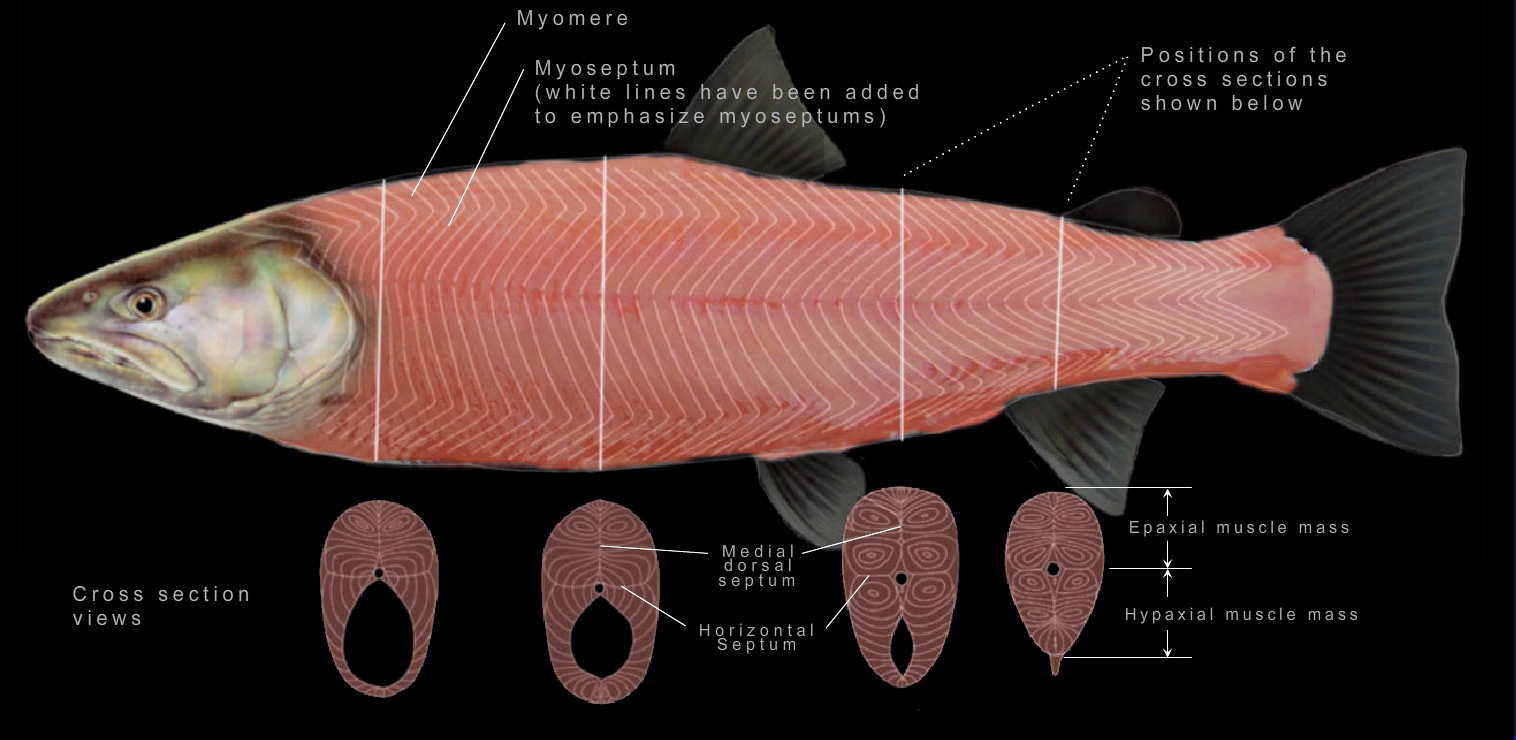Salmonids: Muscle Anatomy

Swimming Against the Current

That's because the body structure of salmoinds allows them to use turbulence to their advantage. They do this by exploiting the water's energy, propelling themselves forward by bouncing off eddies in an alternating side-to-side motion, a strategy not unlike that of a kite moving from side to side across a breeze.
In general, when fish swim, they reduce resistance by folding their fins back and fluttering.
their tails rapidly. But when they swim in choppy water such as when an obstacle like a downed log or rock creates turbulence, their fins relax and their bodies flap from side to side like a flag blowing in the wind. In essences, the fish move back and forth using the force of the water more than their own muscles.
Indeed, muscles studies show in this kind of turbulent water, the fish use the muscles near the head to position themselves, but their body muscles go virtually limp. The flag-flapping motion requires almost no muscle activity. Dead fish, in fact, when held in place in turbulent current, move the same way. The fish then are free to sit in the middle of a turbulent current with little energy expend-iture. When necessary, they can push against the turbu-lence, and use it to propel themselves forward in a much more efficient manner than if the turbulence were absent.
Salmonids: Muscle Anatomy

Swimming Against the Current

That's because the body structure of salmoinds allows them to use turbulence to their advantage. They do this by exploiting the water's energy, propelling themselves forward by bouncing off eddies in an alternating side-to-side motion, a strategy not unlike that of a kite moving from side to side across a breeze.
In general, when fish swim, they reduce resistance by folding their fins back and fluttering.
their tails rapidly. But when they swim in choppy water such as when an obstacle like a downed log or rock creates turbulence, their fins relax and their bodies flap from side to side like a flag blowing in the wind. In essences, the fish move back and forth using the force of the water more than their own muscles.
Indeed, muscles studies show in this kind of turbulent water, the fish use the muscles near the head to position themselves, but their body muscles go virtually limp. The flag-flapping motion requires almost no muscle activity. Dead fish, in fact, when held in place in turbulent current, move the same way. The fish then are free to sit in the middle of a turbulent current with little energy expend-iture. When necessary, they can push against the turbu-lence, and use it to propel themselves forward in a much more efficient manner than if the turbulence were absent.